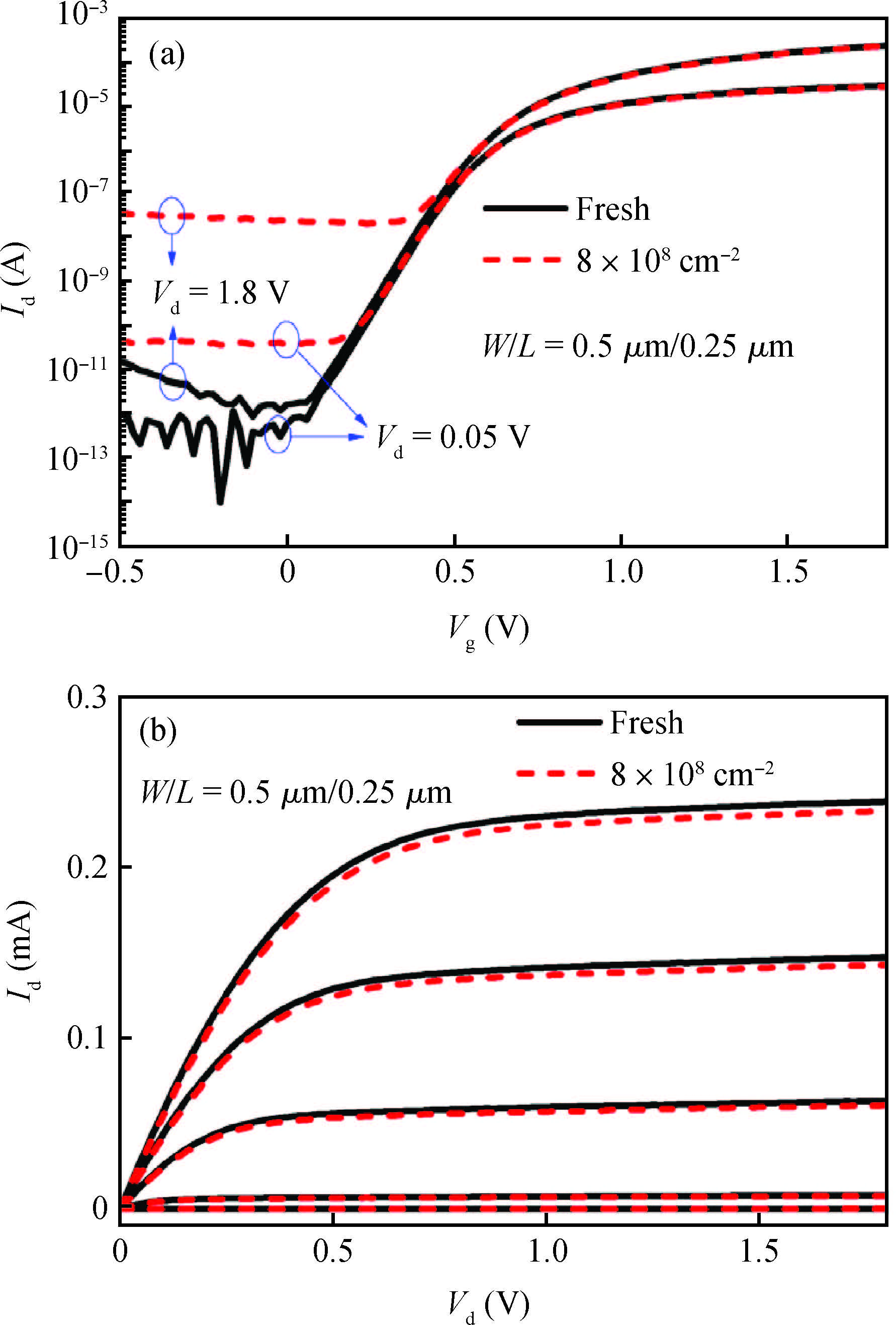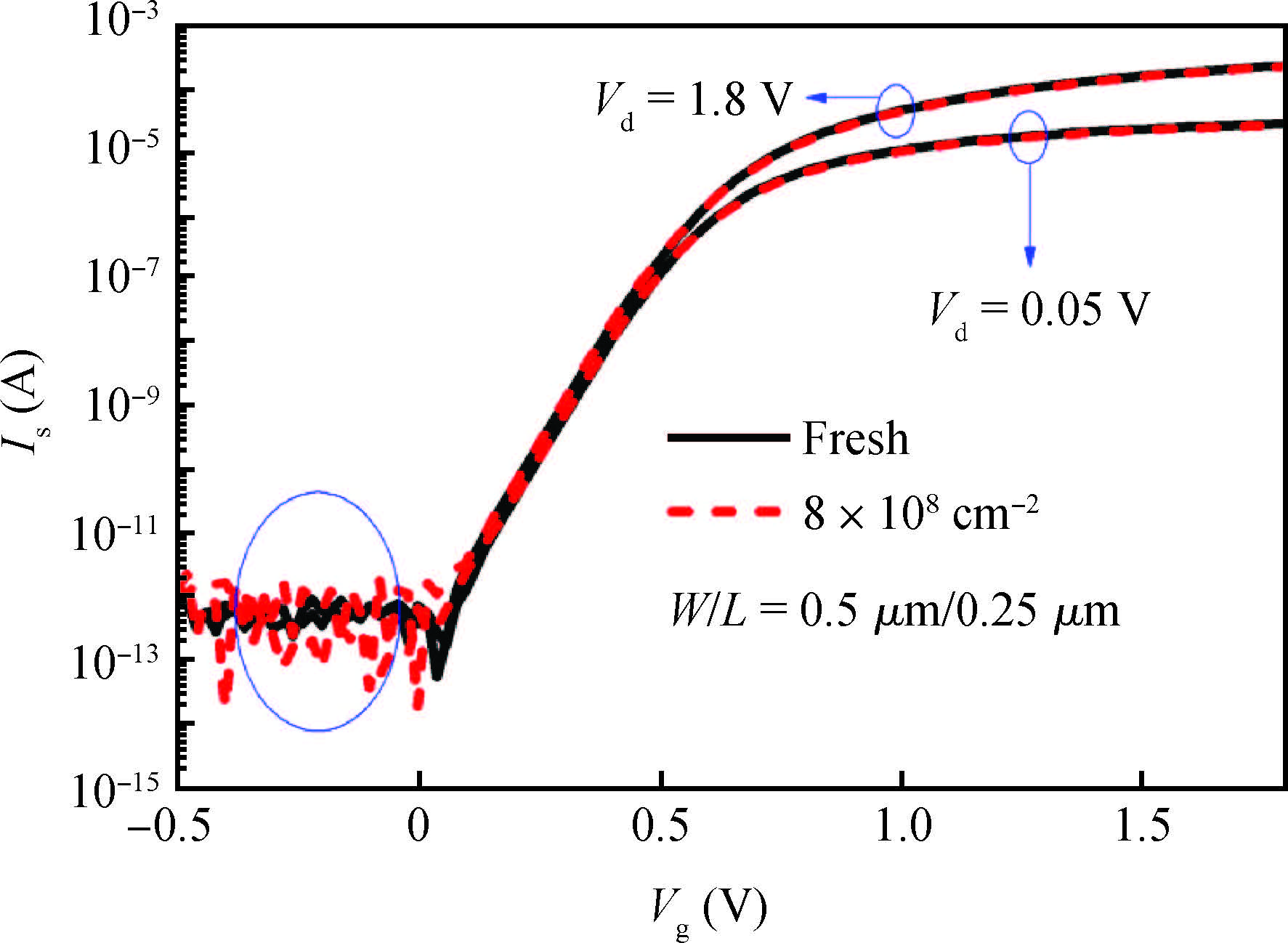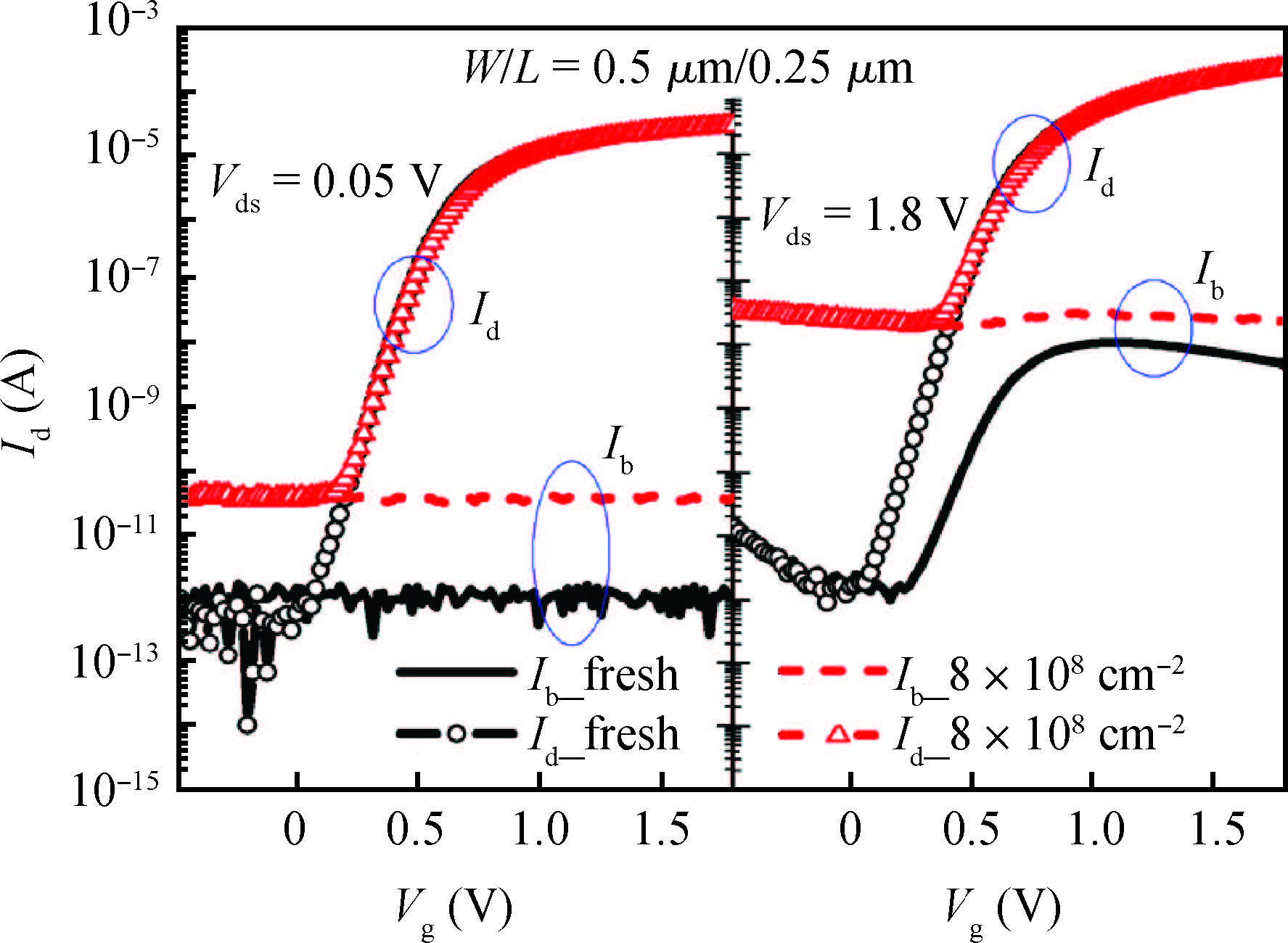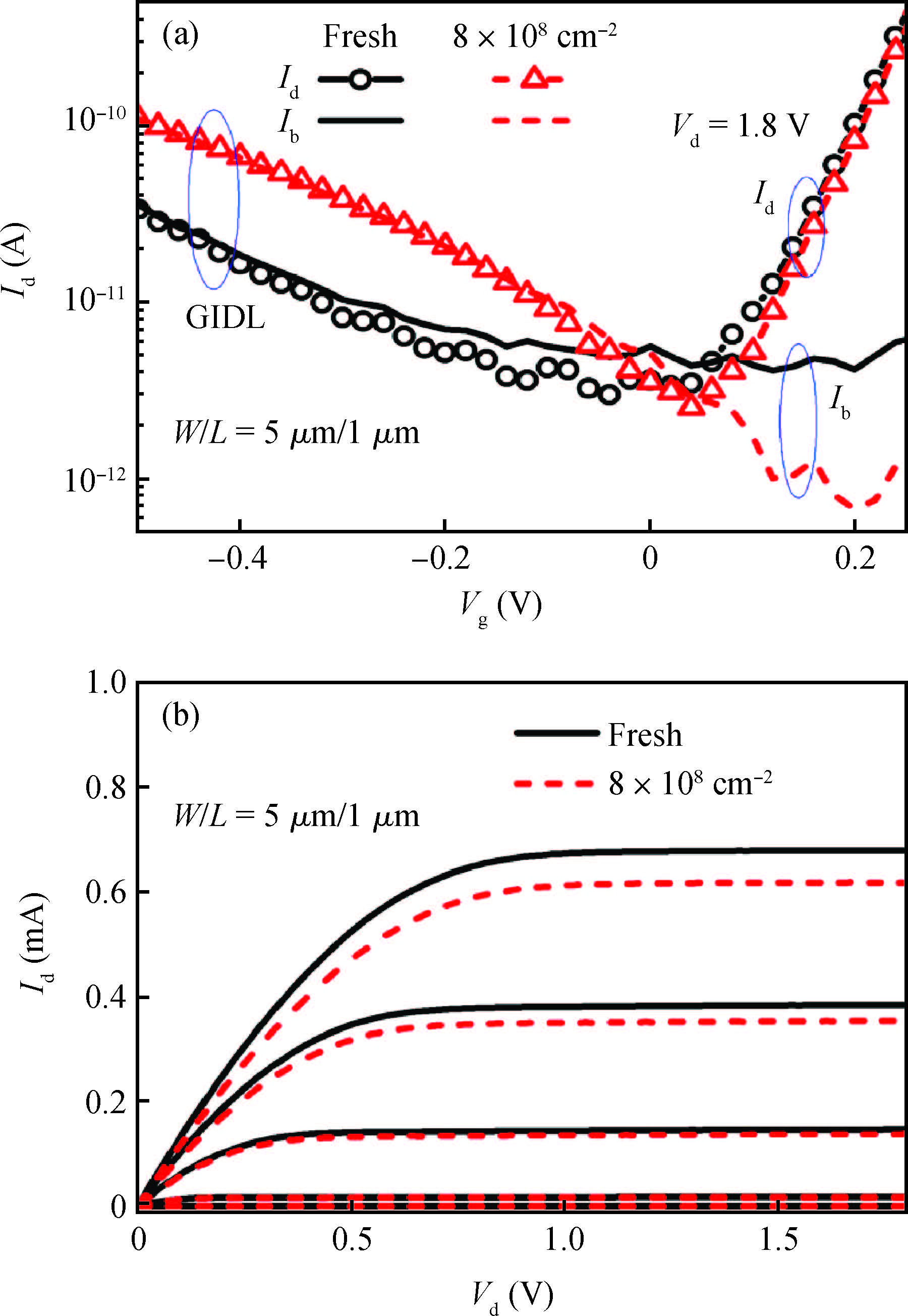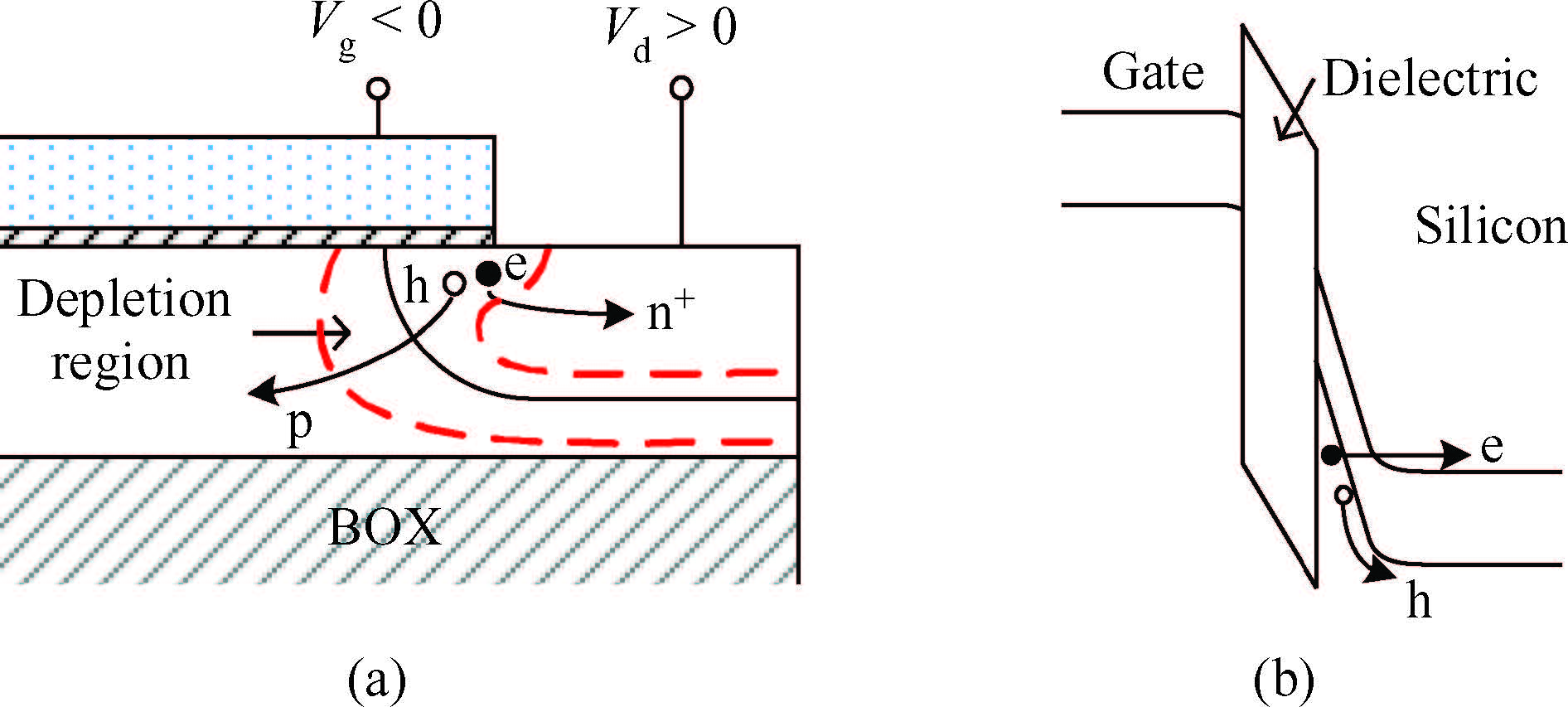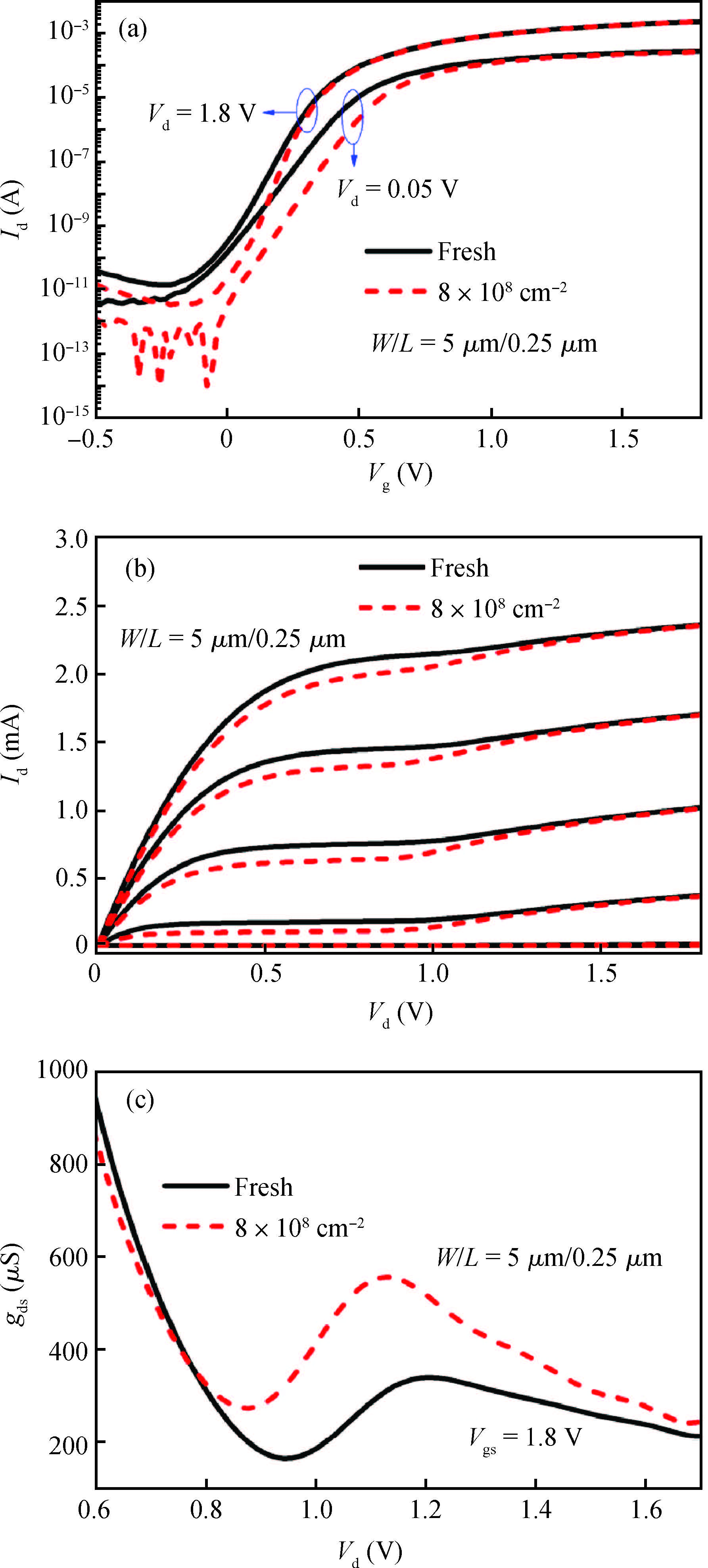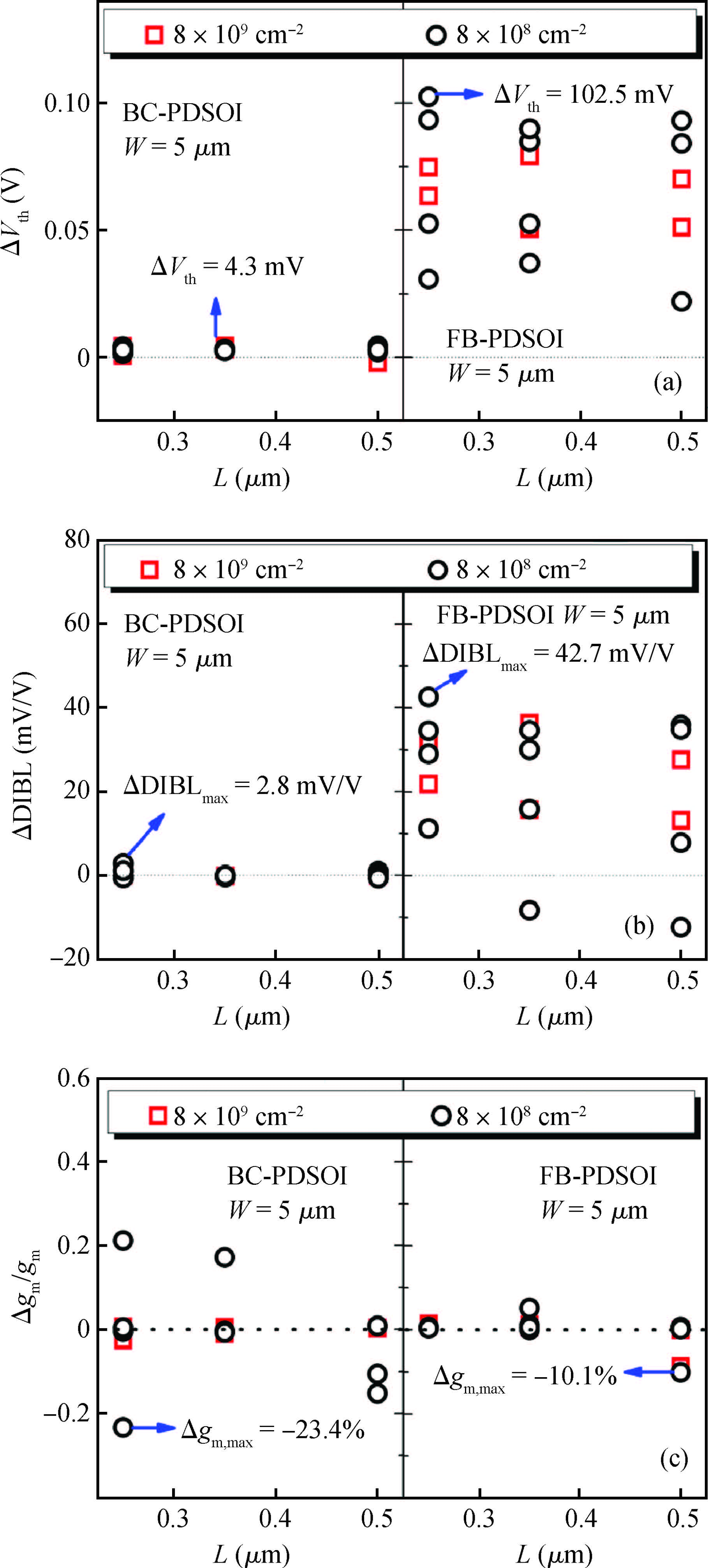| Citation: |
Weikang Wu, Xia An, Fei Tan, Hui Feng, Yehua Chen, Jingjing Liu, Xing Zhang, Ru Huang. Effects of heavy ion irradiation on ultra-deep-submicron partially-depleted SOI devices[J]. Journal of Semiconductors, 2015, 36(11): 114004. doi: 10.1088/1674-4926/36/11/114004
****
W K Wu, X An, F Tan, H Feng, Y H Chen, J J Liu, X Zhang, R Huang. Effects of heavy ion irradiation on ultra-deep-submicron partially-depleted SOI devices[J]. J. Semicond., 2015, 36(11): 114004. doi: 10.1088/1674-4926/36/11/114004.
|
Effects of heavy ion irradiation on ultra-deep-submicron partially-depleted SOI devices
DOI: 10.1088/1674-4926/36/11/114004
More Information
-
Abstract
The effects of the physical damages induced by heavy ion irradiation on the performance of partially-depleted SOI devices are experimentally investigated. After heavy ion exposure, different degradation phenomena are observed due to the random strike of heavy ions. A decrease of the saturation current and transconductance, and an enhanced gate-induced drain leakage current are observed, which are mainly attributed to the displacement damages that may be located in the channel, the depletion region of the drain/body junction or the gate-to-drain overlap region. Further, PDSOI devices with and without body contact are compared, which reveals the differences in the threshold voltage shift, the drain-induced barrier lowing effect, the transconductance and the kink effect. The results may provide a guideline for radiation hardened design.-
Keywords:
- heavy ion,
- displacement damages,
- PDSOI,
- performance degradation
-
References
[1] [2] [3] [4] [5] [6] [7] [8] [9] [10] [11] [12] [13] [14] [15] [16] [17] [18] [19] [20] -
Proportional views





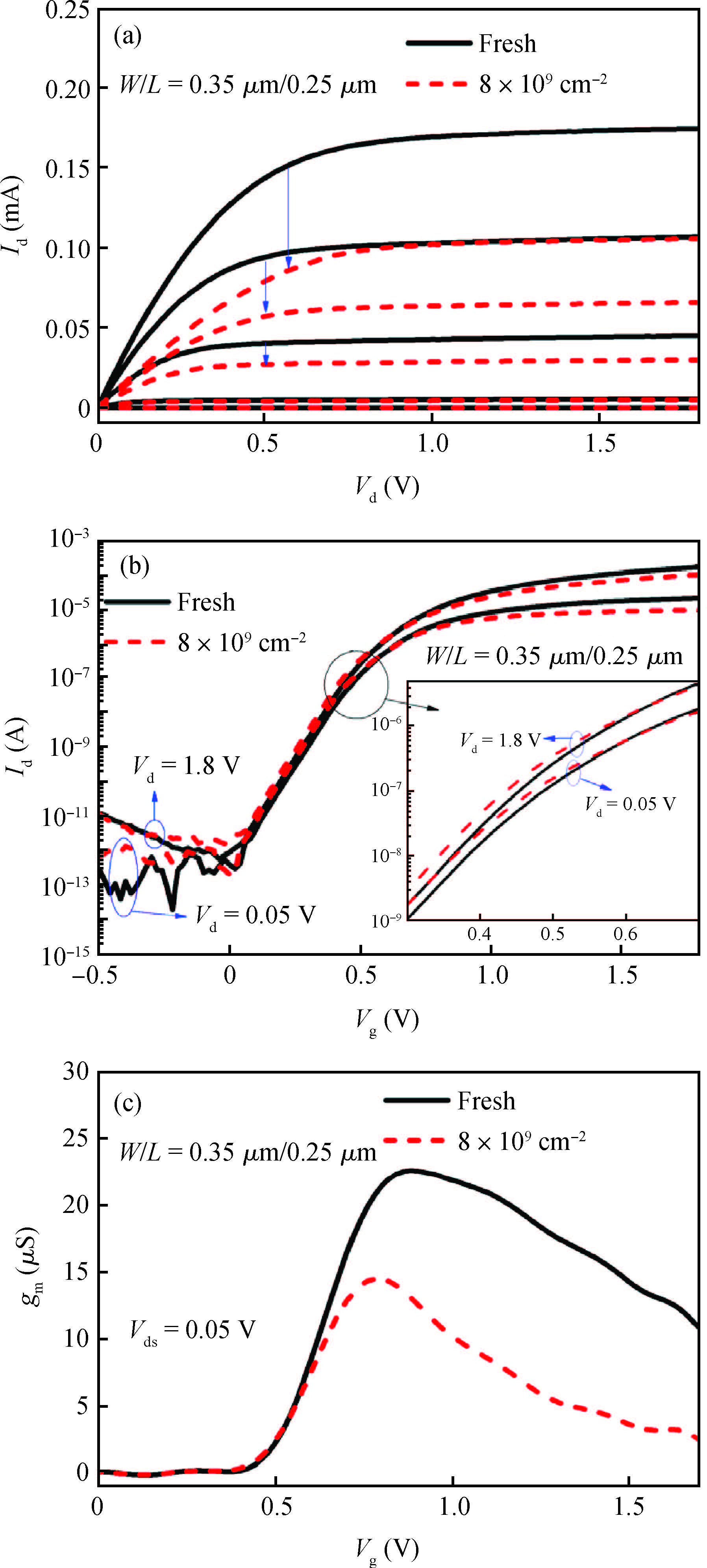
 DownLoad:
DownLoad:
